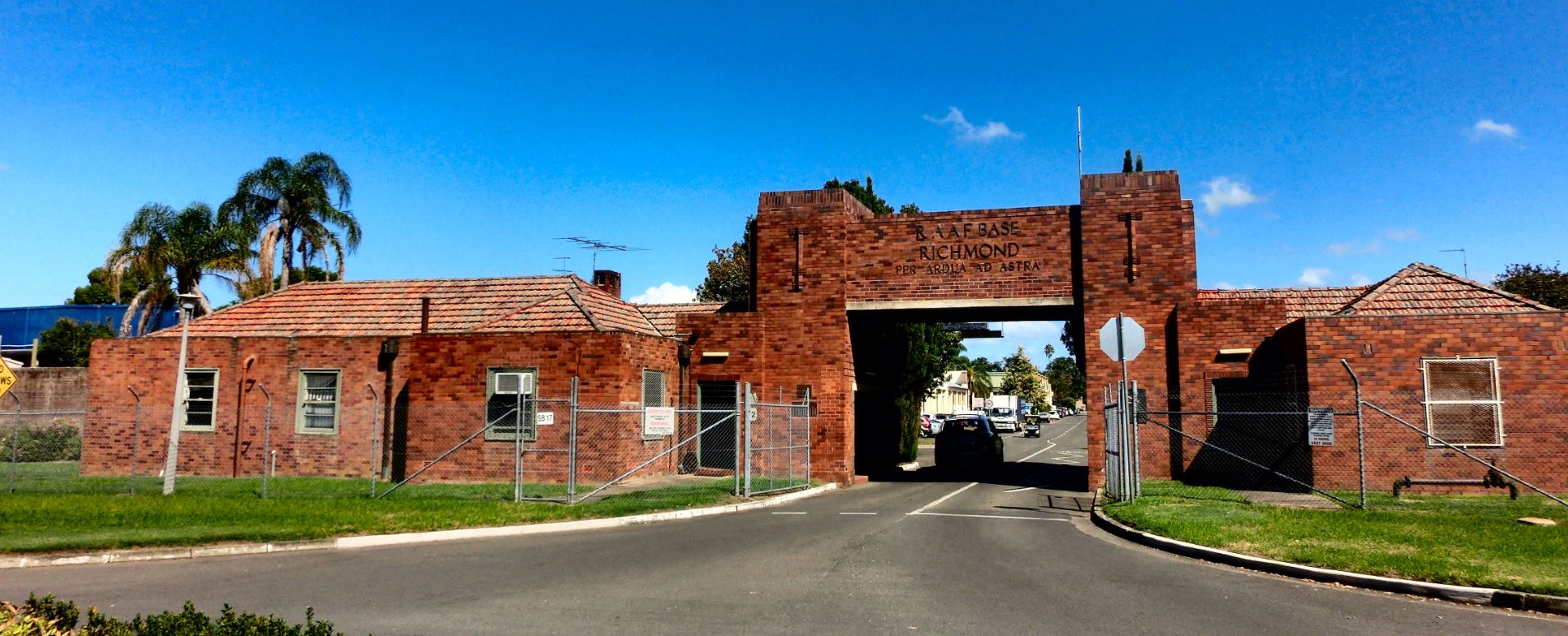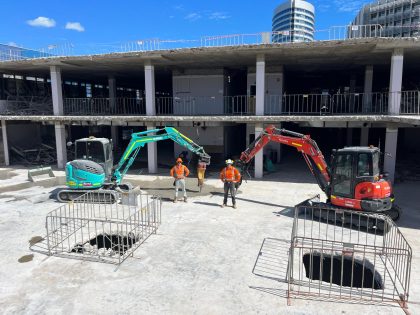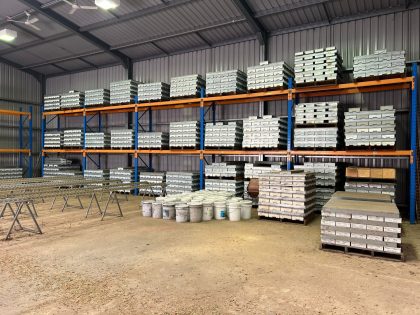Friable Asbestos Removal – Alpha Charlie’s at RAAF Base Richmond

Project Details
- Client Duratec
- Location RAAF Richmond Richmond
- Duration 4 months
by Daniel Green
RAAF Base Richmond is home to the fighting men and women who’ve kept us safe since its inception on June 30th 1925. Now home to heavy airlift in the form of C-130J Hercules and Intel’s 87 SQN, Richmond pilots flew the first RAAF WWII sortie by patrolling Sydney airspace on September 4th 1939.
Sir, yes sir
While the evils of the second world war are long gone a battle against a new enemy rages across this fair land. The war against the fibres. As Sydney’s premier hazmat removal provider, Perfect stands ever ready to do our duty. So when defence remedial contractor Duratech needed to launch a proverbial airstrike on some nasty Asbestos Containing Material at one of Australia’s most historical air bases, their first strike policy included the good ole’ boys from the inner west. Us.
As a new officer in the well-established Perfect Group Demolition Unit [PGDU], Czech-born-now-Aussie engineer Ondrej Krpalek offered his expertise, and, keen to earn his stripes, had his BOQ submitted a full two weeks before the deadline. The target date came and went. But with no fresh intel, radio silence from Duratech made it a tense wait. Hours turned into days and days turned into weeks. Things looked bleak. Until one fateful day a month later when an encrypted message popped up in the engineer’s inbox: Green light Richmond AFB.
With just 12 short weeks to Get It Done, the whip smart engineer sat down with Generals Hamblyn and Jedruszek to strategise a delivery method in line with his innate need for European efficiency. Keen to give the young Lt. a run, the brass let Ondrej organise things as he saw fit, which included a battlefield promotion to full Project Manager.
The Objective.
A fuel storage facility at Richmond had been found to contain thirty-four separate friable asbestos gaskets, and, in line with ADF health directives, those gaskets were slated for removal. All plumbing, valving, piping, hatches and covers were to be drained, removed and decontaminated in readiness for reinstallation in Operation Bolt Up. This phase however, was to be called Operation Tear Down. ACM has not been in production in Australia since 2003, and with the national war on asbestos now entering its eighteenth year, a lean fighting operation was mandated. Except there was just one problem.
Volatility.
See, keeping a C130 aloft means burning Jet A-1, a potent, capricious and high-vapour fuel that doesn’t react well to encapsulation lest it ignites. And given that the friable asbestos removal process needs total encapsulation, well, Houston, we have a problem.
Under Seige.
After brief consultation with Duratech’s man in-country, engineer Gregory Moore, the decision was made to approach the removal in the same way the Germans were halted at Leningrad in the winter of ’41: pacification by hydration. The Russians relied on snow but we would rely on H₂0. A large exclusion zone would be erected, Perfect men would be fully kitted in high end hazmat PPE and the gaskets would be wet down prior to removal. This reduced the ability of those nasty little particles becoming airborne. Furthermore, no electronic devices would be allowed on site and no power tools could be used. To the mechanised infantry of the Perfect Group Demolition Unit this was like going back in time.
The Right Stuff.
One sunny day in July, Ondrej, the team, a Perfect Decon unit and one diesel telehandler descended on RAAF Base Richmond for a staged twelve week deployment. The actual process was straightforward but the safety hurdles were difficult. Any breaches had catastrophic outcomes so there would be no cutting corners. Everyone was on the same page.
H-Hour on D-Day.
With the clock ticking, at 0700 on the xxth of July 2020, xteen brave souls began Operation Tear Down in the national war on asbestos. Battle hardened men hitched up pipes with sling and shackle and wrenched their way to freedom. The age of the refuelling station as well as its constant bombardment by the harsh sun meant that any lubrication on those bolt threads was long gone. Often the nuts and bolts were corroded together or had been laboriously painted over. It would be so easy to fire up the 5” or the acetylene torch but with that much fuel vapour in the air there was no way a hot work permit would be issued. No way in hell.
Turn by turn those first few bolts came undone, freeing the axis of asbestos within. The first section of pipe was removed and relocated to the Green Zone: a nearby decontamination station where it was wet down, hand cleaned and tested for a later return to service. All fasteners were destroyed. There would be no taking chances.
With field testing of their process complete the PGDU were declared operationally ready and work began in earnest.
Asbestos Never Sleeps.
Working in with other units meant frequent incursions into enemy territory for pitched battles against the axis of asbestos. The team would be inserted, decontaminate sections of pipe and be extracted with the only casualties being ACM gaskets. Inclement weather and conflicting schedules threatened to derail the delivery date but Perfect soldiers never say die and the project marched on. Like the Allies into Berlin.
V-Day.
Twelve weeks later to the day, the venerable Perfect Group Demolition Unit demobilised all assets. Every piece of asbestos had been bagged & tagged and sent to the one place ACM fears to tread: Eastern Creek. It would be destroyed in line with EPA directives. With air monitoring giving the all clear, Moore and Krpalek gave the place one last sweep – in hazmat we have a saying: no materials left behind.
The PGDU served with distinction and with zero casualties they were sent on some well-earned RnR, where they await their next mission..
Ain’t Asbestos Hell.










